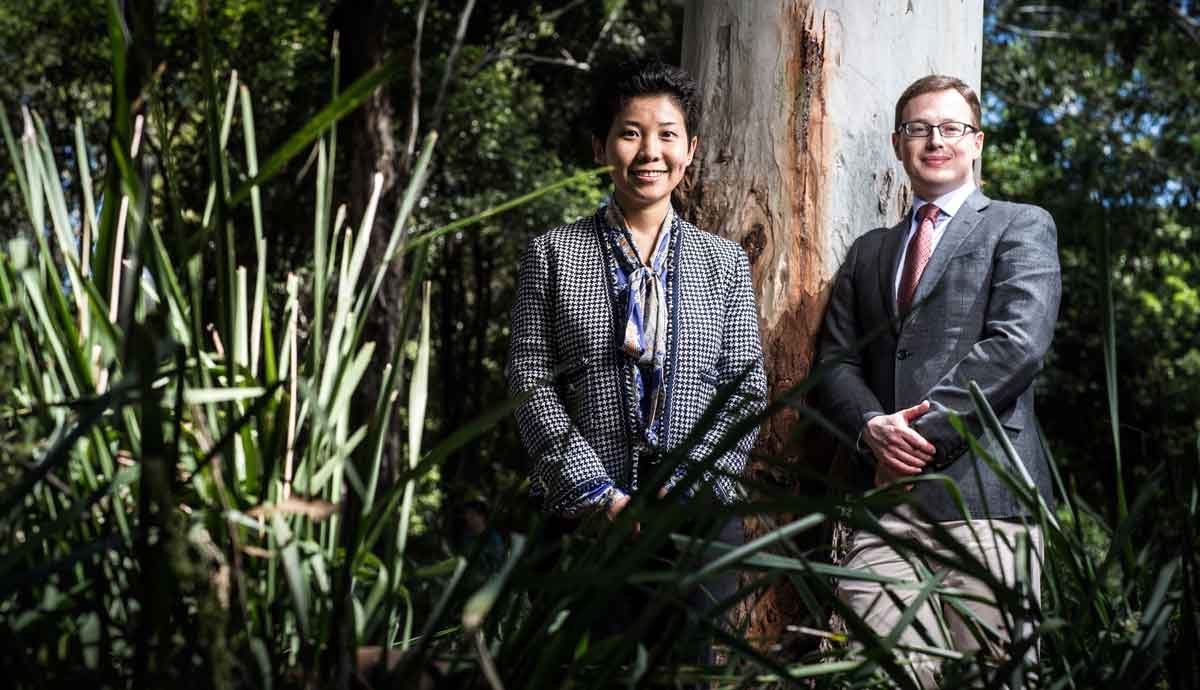October 5, 2016
Exploring new health and green-space links
UOW researchers lead 'Greener Cities Healthier Lives' project
Can living near parks and other green-spaces result in better pregnancy health outcomes? Can a child’s wellbeing and academic scores be linked to the amount of vegetation around their neighbourhood? Do adults in greener areas experience better mental and physical health, do more physical activity and visit emergency departments less? What types of greenery are preferred among retirees for getting outdoors and participating in physical and social recreation more often?
These questions and more will be examined through a $3.2 million research project developed through the Horticulture Innovation Australia (Hort Innovation) Green Cities fund, in partnership with the Population Wellbeing and Environment Research Lab (PowerLab), part of the Faculty of Social Sciences at the University of Wollongong (UOW).
The five-year research project entitled ‘Greener Cities Healthier Lives’ will be led by Associate Professor Thomas Astell-Burt and Dr Xiaoqi Feng, two of Australia’s leading green space and public health researchers.
Associate Professor Astell-Burt said the rapid urbanisation of the global population has resulted in large, often sprawling and mostly grey cities with people living in medium-to-high rise buildings with little greenery nearby, particularly in low income and socioeconomically disadvantaged neighbourhoods, where mental and physical health problems also tend to cluster.
“Parks are great places to be physically active and meet with friends and family, both of which we already know are important for our health,” he said.
“But we also theorise that green spaces help provide places where we can find relief from the noise and air pollution associated with heavy traffic in our cities, as well as locations to relax and recuperate from stressful things that occur daily in our lives.”
Dr Feng said the new project brings together many senior and junior researchers to explore several important questions for the first time in Australia.
“With prior evidence including our own suggesting that exposure to greenery helps us feel well and live longer, healthier lives, this suggests that green spaces do more than ‘pretty up’ our neighbourhoods,” she said.
“This project will address the key overarching research question now for industry and policy makers: what is the ideal amount of local green-space that helps to keep all of us healthy and out of hospital?
“We recognise that there may not be a one-size-fits-all solution and how people use green space is often dependent upon their age, which is why we will examine relevant outcomes and pathways that relate to pregnancy, childhood, adulthood and seniors.”
The research will cover five key themes: pregnancy and perinatal health; child health and educational attainment; adult mental health and chronic disease risk; health service use and healthcare costs; and green space preferences and outdoor recreation among seniors.
The PowerLab team will draw on existing and bespoke data as part of the research project, including the study of NAPLAN results to provide the first insights in Australia on green-space and educational attainment, longitudinal studies of mental health and chronic disease in relation to green-space and hospital admissions and health service costs associated with local green-spaces.
This research is among the first round of projects to be funded through the Hort Innovation Green Cities strategic co-investment fund – an initiative that aims to invest in strategic longer-term research that drives a measurable increase in urban green-space.
“This exciting project will not only inform the recommendations the nursery and landscape industries make to their clients, it will also enhance awareness of new understandings of green-space and health within the academic community internationally,” Hort Innovation Chief Executive John Lloyd said.
The research and investigator team led by the PowerLab spans four faculties at UOW (Social Sciences; Science Medicine and Health; Engineering and Information Sciences; Business). It also includes investigators from the Early Start Research Institute, the Illawarra Health and Medical Research Institute and the South Western Sydney Local Health District, ensuring excellent clinical expertise and strong connections to national decision-makers in the health and education sectors.
This project is being delivered in line with the 202020Vision – a collaborative initiative that is working to make Australia’s urban areas 20 per cent greener.
